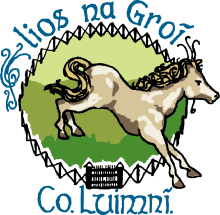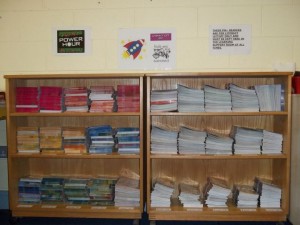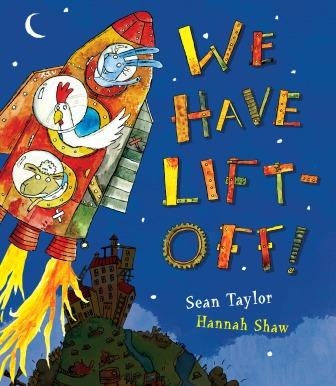 Our Literacy Lift Off programme has started with second Class. This is an early intervention programme for helping literacy and writing levels. It is a daily literacy hour where resource teachers in collaboration with class teachers, will work in the classroom from Monday to Thursday afternoon inclusive for a number of weeks in four 12 minute rotating sessions on a range of literacy activities.
Our Literacy Lift Off programme has started with second Class. This is an early intervention programme for helping literacy and writing levels. It is a daily literacy hour where resource teachers in collaboration with class teachers, will work in the classroom from Monday to Thursday afternoon inclusive for a number of weeks in four 12 minute rotating sessions on a range of literacy activities.
It is an intensive programme of Reading and Writing, which gives the pupils lots of opportunities to read books at their own level of competency. It gradually lifts the complexity of what they can do in both reading and writing by equipping them with the necessary problem-solving skills. Pupils on the programme would typically be expected to progress at the rate of one level per week.
The aim of Literacy Lift-Off is to make pupils constructive learners. It teaches them ‘how’ to problem-solve independently.
We hope to implement the programme in blocks of 6/8weeks in senior infants, first and second classes this year. Diverse activities are essential for extending literacy processing power. Hence, the pupils work in ‘stations’ to carry out a number of activities in reading and writing, under the guidance of the teachers. The programme uses specially graded “PM+” readers. We are grateful to our Board of Management for their support in funding these very expensive readers. Pupils are assessed and grouped according to their reading ability prior to the commencement of the programme.
To support your child in this process we ask parents to:
1. Listen to their child reading a familiar book (a book already read in class) each night. This book will be in their child’s reading folder. Parents can support their child by asking questions about the story and characters, by asking them to be a word detective and finding certain words, by helping them with tricky words, etc.
2. Ask their child to read their story (sentence) in their writing copy that they have written with their group that day.
3. Their child may also be asked to put together a cut-up story one night in the week. The ‘cut up’ is the story (sentence) they will have written with their group that day and will need to put it together again. Firstly, the child will read the sentence in their writing copy and then close the book. Line the words up in a column downwards so the child can access the words easily and put the sentence back together. The child will then have to stick that cut up into their writing copy underneath the same written story. It is better if the child does not look at the written sentence in their copy; otherwise it becomes a copying exercise.
We expect that this homework should only take a maximum of 5 to 10 minutes.
Our Stations/Activities work as follows:
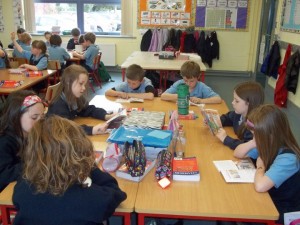
Station 1: Familiar Reading
Pupils read previously seen PM+ Readers.
Purpose: Development of enjoyment, fluency, comprehension and speed.
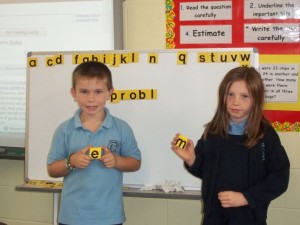
Station 2: Word Work
They use magnetic letters on the whiteboard to make and break words.
Purpose: To show children how words work, so that they can make a fast visual analysis of their reading.
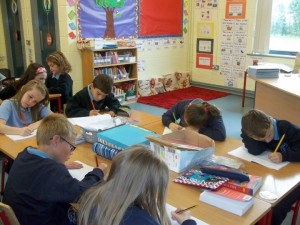
Station 3: Writing
Pupils write sentences based on their own experiences, using words that they encounter in their readers.
Purpose: That they will learn how they can write their own messages by hearing and recording sounds in words, using analogy and learning unusual words.
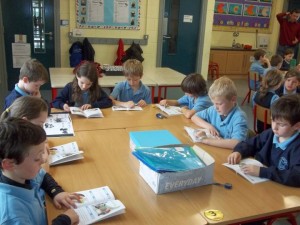
Station 4: New Reading
Encountering new texts each day challenges the pupils to discover new ways to go beyond their current operating ability and lift their literacy processing.
Purpose: Pupils learn to use strategic activities to read new texts.
 Our Literacy Lift Off programme has started with second Class. This is an early intervention programme for helping literacy and writing levels. It is a daily literacy hour where resource teachers in collaboration with class teachers, will work in the classroom from Monday to Thursday afternoon inclusive for a number of weeks in four 12 minute rotating sessions on a range of literacy activities.
Our Literacy Lift Off programme has started with second Class. This is an early intervention programme for helping literacy and writing levels. It is a daily literacy hour where resource teachers in collaboration with class teachers, will work in the classroom from Monday to Thursday afternoon inclusive for a number of weeks in four 12 minute rotating sessions on a range of literacy activities.